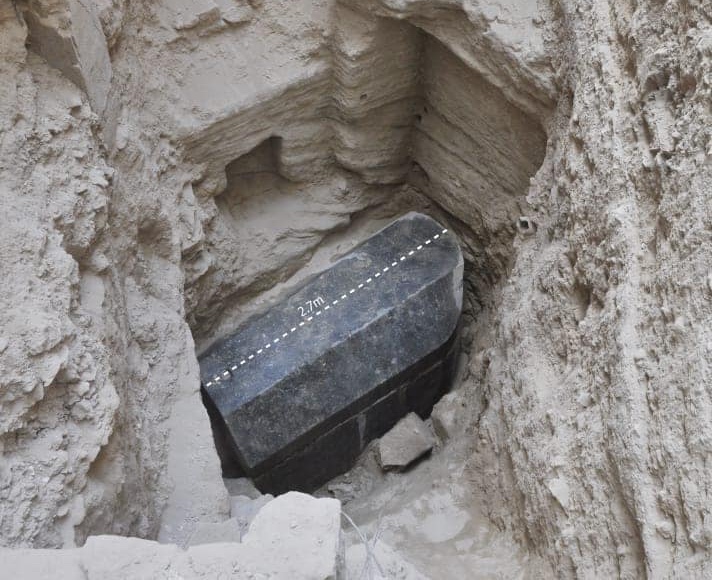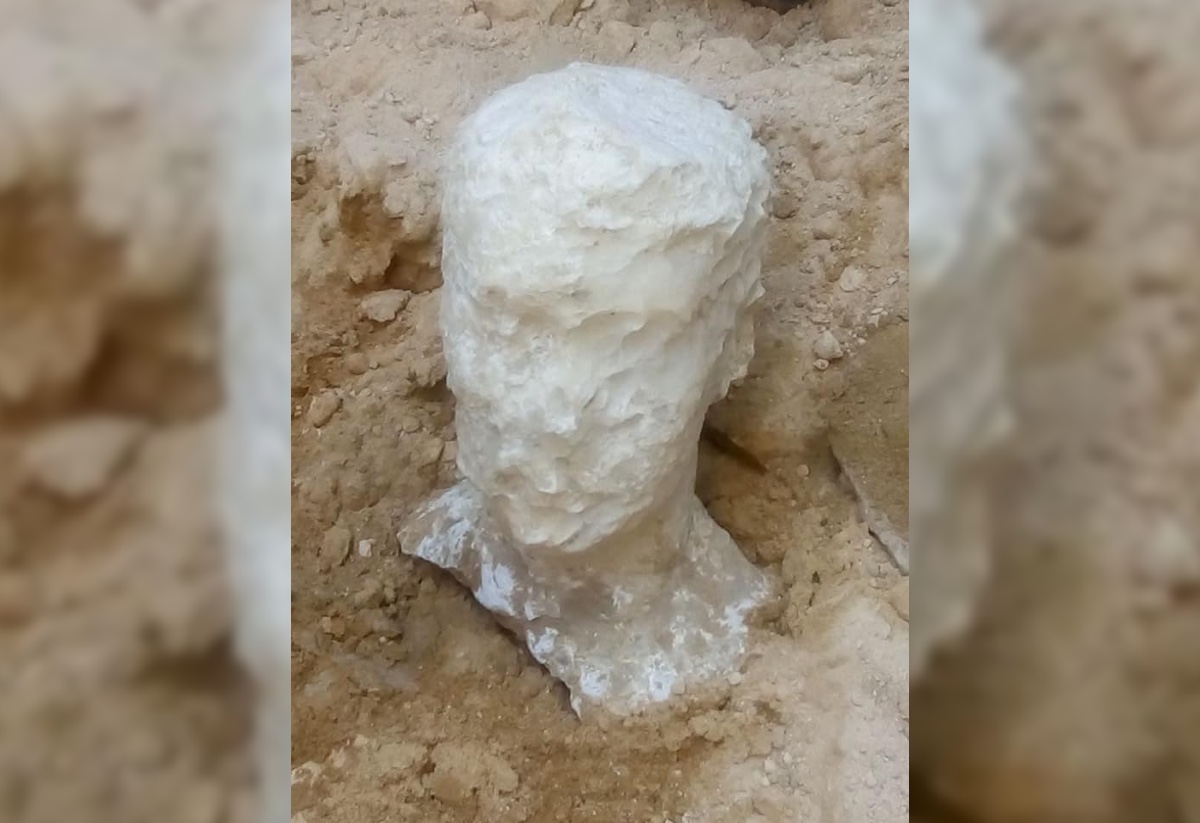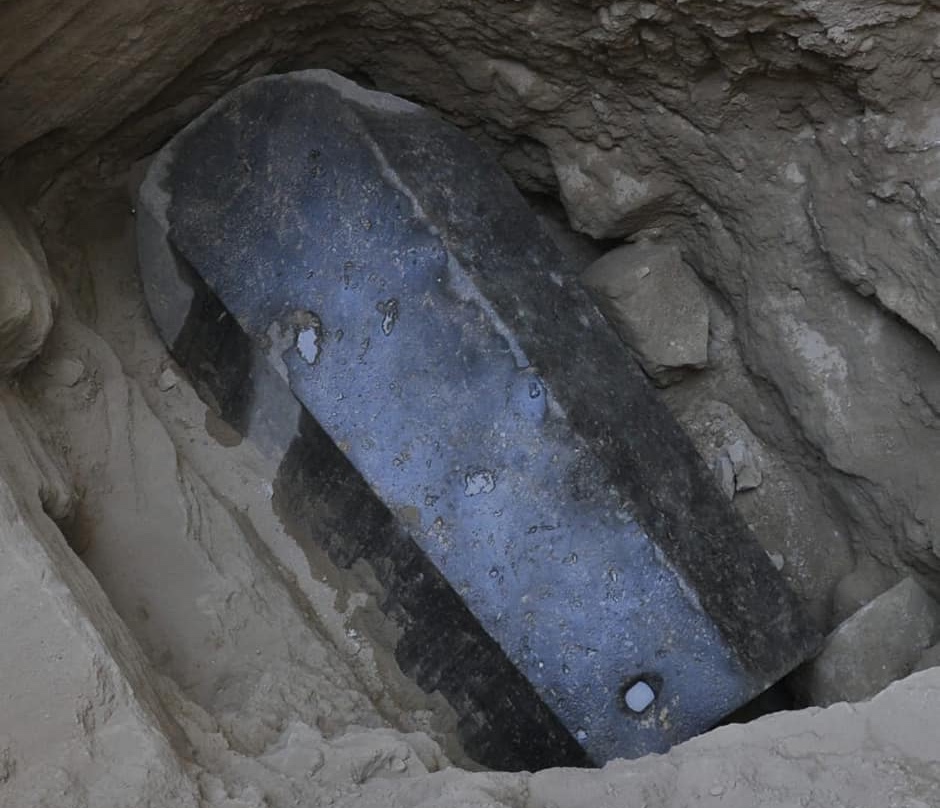What's Inside This Massive Egyptian Sarcophagus?

A massive black granite sarcophagus and a sculpture of a man who may be buried inside have been discovered in a tomb in Alexandria, Egypt.
The granite sarcophagus looks foreboding: It's nearly 9 feet long, 5 feet wide and 6 feet tall (2.7 by 1.5 by 1.8 meters). And, it may be the largest sarcophagus ever discovered in Alexandria, said Mostafa Waziri, general secretary of Egypt's Supreme Council of Antiquities, in a statement released by Egypt's antiquities ministry.
A thick layer of mortar covers much of the sarcophagus, suggesting that it has not been opened since it was buried, Waziri said in the statement. As such, the person buried in the sarcophagus, along with any clothing or jewelry they wore and any artifacts they were buried with, may still be intact, waiting to be discovered. [See Photos of Mummies Discovered at an Ancient Egyptian Cemetery]
Additionally, an alabaster head of a man, which may depict the person whose remains are buried in the sarcophagus, was also found in the tomb where the sarcophagus was discovered, the statement said.

A team from Egypt's antiquities ministry was inspecting an area of land in the Sidi Gaber district before construction work on a building began when the members came upon the mysterious coffin.
It dates back to sometime between 304 and 30 B.C., a time after the death of Alexander the Great, when the descendants of Ptolemy I, who was one of Alexander's generals, ruled Egypt. At this time, Alexandria — which Alexander the Great claimed to have founded (although people were living there earlier) — was the capital of Egypt.
The discovery leaves archaeologists with a series of mysteries: Who is buried inside the sarcophagus? What artifacts are hiding inside? And, why is the sarcophagus so large?
Sign up for the Live Science daily newsletter now
Get the world’s most fascinating discoveries delivered straight to your inbox.

Rare opportunity
While ancient tombs are often discovered in Egypt, they have often been looted, whether in ancient or modern times. Most sarcophagi are found already opened, their contents taken away and the bones of the mummies sometimes found scattered by looters.
In this case, the sarcophagus appears not to have been opened yet, giving archaeologists a chance to study its contents and the person inside it.
Archaeologists are being cautious with the sarcophagus. They have not opened it, and they may decide that, to prevent damage, they will use X-rays, computed tomography (CT) scans or another scientific test that will allow them to peer inside without opening the sarcophagus.
Originally published on Live Science.

Owen Jarus is a regular contributor to Live Science who writes about archaeology and humans' past. He has also written for The Independent (UK), The Canadian Press (CP) and The Associated Press (AP), among others. Owen has a bachelor of arts degree from the University of Toronto and a journalism degree from Ryerson University.









